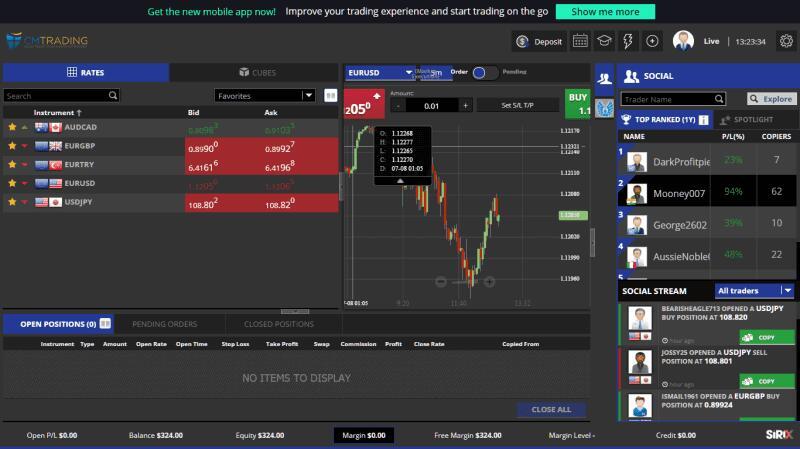
However, the company is owed $90,000 and will still try to collect the entire $90,000 and not just the $85,200. There are a number of high-quality accounting software solutions available. To find out which is the right option for your business, check out our article detailing the best accounting software for small businesses. A balance sheet is a financial document that you should work on calculating regularly. If there are discrepancies, that means you’re missing important information for putting together the balance sheet. Some liabilities are considered off the balance sheet, meaning they do not appear on the balance sheet.
ESRS vs. ISSB Standards – a Comparative Approach Tannenbaum … – JD Supra
ESRS vs. ISSB Standards – a Comparative Approach Tannenbaum ….
Posted: Mon, 28 Aug 2023 18:57:24 GMT [source]
The statement is helpful to the stakeholders or say interested parties, in learning about the sources and uses of the company’s cash during a particular financial year, from different activities. Fundamental analysts, when valuing a company or considering an investment opportunity, normally start by examining the balance sheet. This is because the balance sheet is a snapshot of a company’s assets and liabilities at a single point in time, not spread over the course of a year such as with the income statement. The allowance method is the more widely used method because it satisfies the matching principle. The allowance method estimates bad debt during a period, based on certain computational approaches. When the estimation is recorded at the end of a period, the following entry occurs.
The Four Primary Financial Statements That Companies Use
Managers can opt to use financial ratios to measure the liquidity, profitability, solvency, and cadence (turnover) of a company using financial ratios, and some financial ratios need numbers taken from the balance sheet. When analyzed over time or comparatively against competing companies, managers can better understand ways to improve the financial health of a company. As of January 1, 2018, GAAP requires a change in how health-care entities record bad debt expense. Before this change, these entities would record revenues for billed services, even if they did not expect to collect any payment from the patient. Allowance for Doubtful Accounts decreases (debit) and Accounts Receivable for the specific customer also decreases (credit). Allowance for doubtful accounts decreases because the bad debt amount is no longer unclear.
Does H&E Equipment Services (NASDAQ:HEES) Have A Healthy Balance Sheet? – Simply Wall St
Does H&E Equipment Services (NASDAQ:HEES) Have A Healthy Balance Sheet?.
Posted: Mon, 04 Sep 2023 10:29:52 GMT [source]
As companies recover accounts receivables, this account decreases, and cash increases by the same amount. With this method, accounts receivable is organized into categories by length of time outstanding, and an uncollectible percentage is assigned to each category. For example, a category might consist of accounts receivable that is 0–30 days past due and is assigned an uncollectible percentage of 6%. Another category might be 31–60 days past due and is assigned an uncollectible percentage of 15%. All categories of estimated uncollectible amounts are summed to get a total estimated uncollectible balance.
Why do we need a balance sheet?
The second is a balance-sheet approach that measures uncollectibles as a percentage of ending accounts receivable. Under the balance-sheet approach, the company looks at historical data and estimates what percentage of receivables ends up being uncollectible. For example, if the company writes off an bookstime average of $5,000 in a year and ending receivables average $1 million, the company estimates uncollectible accounts at 5 percent of receivables. A company’s financial statements—balance sheet, income, and cash flow statements—are a key source of data for analyzing the investment value of its stock.
Pay attention to the balance sheet’s footnotes in order to determine which systems are being used in their accounting and to look out for red flags. Some companies issue preferred stock, which will be listed separately from common stock under this section. Preferred stock is assigned an arbitrary par value (as is common stock, in some cases) that has no bearing on the market value of the shares. The common stock and preferred stock accounts are calculated by multiplying the par value by the number of shares issued. It’s also not out of the realm of possibility that stablecoins could take share of remittances from Bitcoin.
Video Explanation of the Balance Sheet
Current liabilities are due within one year and are listed in order of their due date. Long-term liabilities, on the other hand, are due at any point after one year. The balance sheet approach, which is used by more than 85% of U.S. multinational companies, is a good way to regulate the costs of expatriation and ensure the fair payment of employees.
- Working with a real estate capital lending partner is especially beneficial for registered independent advisors (RIAs) who don’t have a traditional lending arm available to them like advisors at large banks do.
- On the right side, the balance sheet outlines the company’s liabilities and shareholders’ equity.
- You are considering switching to the balance sheet aging of receivables method.
- A balance sheet is a financial statement listing a company’s assets, liabilities and owners’ or shareholders’ equity on a specific date.
- The balance sheet is a report that gives a basic snapshot of the company’s finances.
- An audit is an inspection of a company’s accounting records, usually done by an independent certified public accountant.
On the other side, you’ll put the company’s liabilities and shareholder equity. For example, even the balance sheet has such alternative names as a “statement of financial position” and “statement of condition.” Balance sheet accounts suffer from this same phenomenon. Fortunately, investors have easy access to extensive dictionaries of financial terminology to clarify an unfamiliar account entry. Forming an SME partnership with a real estate credit lending partner can benefit financial advisors who work inside a bank as well as independent financial advisors. Your real estate credit lending partner will quickly become a valuable extension of your firm’s added value service offering.
What Is the Relationship Between General Ledger & Bank Reconciliation?
The outstanding balance of $2,000 that Craft did not repay will remain as bad debt. This helps make sure that the advisor is always the client’s first call when financial needs arise. This line item includes all of the company’s intangible fixed assets, which may or may not be identifiable.

Operating activities are those activities which are related to the principal business activities. Investing activities include the activities which amount to the movement of cash due to the purchase or sale of investment and any other long-term asset of the company. Financial Activities accounts for those activities in which the company either raises capital or repay the debenture holders and preference shareholders.
Establishment of Responsibility in Accounting
The direct write-off method delays recognition of bad debt until the specific customer accounts receivable is identified. Once this account is identified as uncollectible, the company will record a reduction to the customer’s accounts receivable and an increase to bad debt expense for the exact amount uncollectible. A balance sheet represents a company’s financial position for one day at its fiscal year end, for example, the last day of its accounting period, which can differ from our more familiar calendar year. Companies typically select an ending period that corresponds to a time when their business activities have reached the lowest point in their annual cycle, which is referred to as their natural business year. It should not be surprising that the diversity of activities included among publicly-traded companies is reflected in balance sheet account presentations. In these instances, the investor will have to make allowances and/or defer to the experts.
- A company usually must provide a balance sheet to a lender in order to secure a business loan.
- In short, the balance sheet is a financial statement that provides a snapshot of what a company owns and owes, as well as the amount invested by shareholders.
- In this article, we’ll look at Bitcoin Depot’s business model, latest earnings report, and try to determine whether the stock is worth a look after such an aggressive selloff.
However, the way these investors accumulate wealth is very different from their predecessors, which makes it hard for traditional banks to underwrite them for real estate loans. Instead of working at the same company for 30 or 40 years, for example, many of these investors are self-employed entrepreneurs earning money online via e-commerce or social media channels. Any amount remaining (or exceeding) is added to (deducted from) retained earnings.
Ultimately, this method preserves the employee’s current purchasing power, no matter where they end up working. You may notice that all three methods use the same accounts for the adjusting entry; only the method changes the financial outcome. Also note that it is a requirement that the estimation method https://online-accounting.net/ be disclosed in the notes of financial statements so stakeholders can make informed decisions. Bad Debt Expense increases (debit), and Allowance for Doubtful Accounts increases (credit) for $48,727.50 ($324,850 × 15%). Let’s consider that BWW had a $23,000 credit balance from the previous period.
The employee is expected to contribute a portion of their salary to each of these four categories, equivalent to what they would typically pay for each one at home. If, for example, rent in the host country is more expensive than an employee’s home country, the organization will pay the difference. This serves to protect employees from cost differences between the home and host countries. Harold Averkamp (CPA, MBA) has worked as a university accounting instructor, accountant, and consultant for more than 25 years.